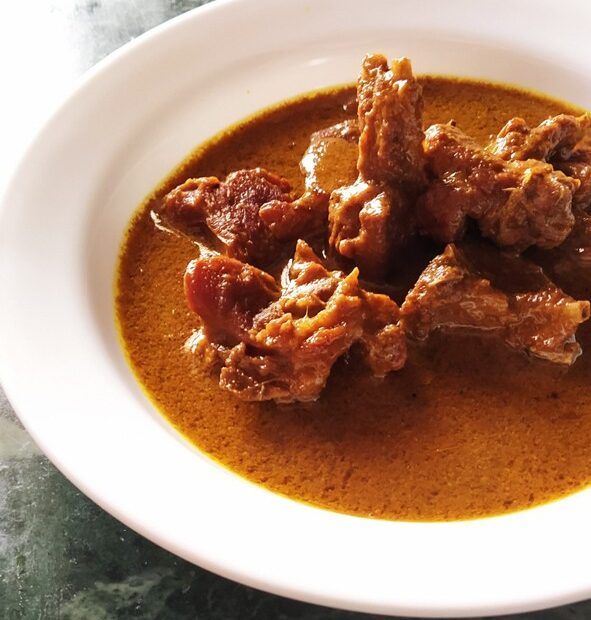About The Author
Hello! From Chuchura (in Hooghly District) and a foodie, I created this blog with a mission to preserve the food of the land; with a message to encourage and promote clean and real food. I hope you enjoy and gain out of this blog, happy reading!
Looking forward to read and hear your feedback.
Qalia is also pronounced as ‘khaliya’ or ‘kaliya’ is a dish originating in Central Asia.
Advent of the Qalia
In India, the story of Qalia dates back to 1327 AD when Muhammad Bin Tughlaq was shifting his capital from Delhi to Daulatabad. Google says it’s over 1000 kilometres.
The route was long and his soldiers needed food. The chefs would cook qalia for the soldiers.
It was a simple meat-based dish prepared with very basic ingredients like ginger, coriander, turmeric, salt and whole spices. Turmeric replaced saffron as the former was more easily available and inexpensive too.
Naan Qalia
Muhammad Bin Tughlaq himself had a unique style of eating his qalia. He would take a roti/chapati, tear it into pieces and dunk them in the qalia. The qalia would soak up the light, soupy gravy and become plump.
This stayed in Uttar Pradesh for a very long time and became famous as Naan Qalia.
Considered as a comfort food, Naan Qalia was a recommended dish by grandmothers whenever someone in the family fell ill. The need for a light, nutritious and delicious qalia was felt in many families across the region until recently.
Qalia Travelled Places
The soldiers, khansamas and their families took qalia to different parts of undivided India. And wherever the qalia went, it underwent a transformation.
Sometime subtle and sometime very obvious, it was the local ingredients that defined the texture, taste and method of preparation of the dish.
Hence, the recipe of qalia differs from place to place.
While initially, qalia was made with ginger, coriander and whole spices; it later reached the courts of the Nawabs who made the dish exotic with saffron, poppy seeds and dry fruits.
Here are a few varieties of qalia that I could decipher –
- Kundan Qaliya – Awadhi-style Kundan qalia has a golden gravy, and is prepared using ingredients like poppy seeds, brown onion paste and the Lazzat-e-Taam to give it a rich texture
- Chaman Kaliya – Kashmir’s gift to India cooked with paneer instead of meat, and consists of fennel, coriander powder and other spices
- Mahi Qalia – Famous in Hyderabad, this recipe uses coconut, peanuts, sesame seeds, and other ingredients
Qalia’s Bengal Journey
According to literature from the era and those written by historians later, qalia reached Bengal via the ports of Chittagong which would be a major trading center. Arabs, Persians and businessmen from Central Asia and Middle-East would come to Chittagong for trading.
The qalia introduced by these groups had a very thin consistency. However, the most important aspect of such a qalia was vegetables in them.
Undivided Bengal had many river bodies and hence the qalia of the region would be made of fish instead of meat. A light broth of fish containing vegetables defined the qalia of Bengal until the 19th century.
It was during the 19th century that the gravy transformed into a thicker consistency.
Wajid Ali Shah had arrived in Bengal (Metiabruz in Kolkata) during this time after he was defeated and exiled from Awadh. He introduced poppy seeds, almonds and brown onions to Bengali cuisine and the Awadhi Kundan Qalia helped define the Bengali Machher Kaliya as we have today.
Concluding Remarks
Qalia has a rich legacy and defined cuisine in India for centuries. Today, the soul of qalia is in danger as chefs prepare this dish according to their whims and fancy.
The real qalia that was simple, nutritious, soothing and equally delicious is fading into oblivion.


Pingback: A Basic & Easy Chicken Korma Recipe That You Must Try Out Toda - FinallyFoodie.com